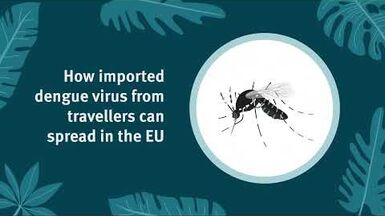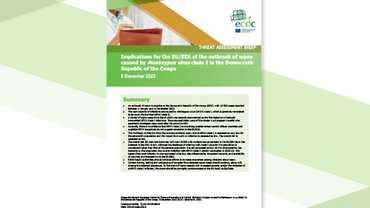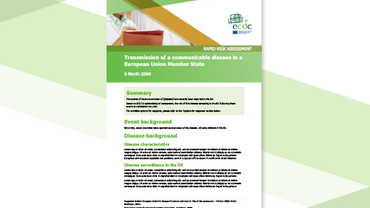Rapid risk assessment: Outbreak of Rift Valley fever in Niger, 10 October 2016
Rift Valley fever (RVF) is an acute febrile disease affecting ruminants and humans caused by a virus of the genus Phlebovirus. The disease has been reported in regions of eastern and southern Africa, and in most of the sub-Saharan and West African countries, Egypt, Madagascar, Saudi Arabia and Yemen.
During August and September 2016, 78 human cases including 26 deaths were reported in the district of Tchintabaraden (Tahoua Region) in Niger. However, the outbreak is currently affecting rural rather than touristic areas.
The risk of RVF cases being imported into the EU is not new as RVF is endemic in many African countries and in Saudi Arabia, a country to which many EU citizens travel. However, to date, no autochthonous cases or outbreaks of RVF have been reported in the European Union (EU) and the four cases of RVF reported in the EU between 2010 and 2015 were all imported.
Executive Summary
The current Rift Valley fever (RVF) outbreak in Niger does not pose a new risk for the European Union, concludes ECDC risk assessment.
During August and September 2016, 78 human cases including 26 deaths were reported in the district of Tchintabaraden (Tahoua Region) in Niger.
The current Rift Valley fever (RVF) outbreak in Niger does not pose a new risk for the European Union, concludes ECDC risk assessment:
- The outbreak is currently affecting rural areas that are not considered touristic areas. Travellers staying in urban areas or in areas not affected by the RVF outbreak are not at risk of infection. Travellers visiting affected areas are at risk of infection and should avoid contacts with ruminants and use protection against mosquitoes.
- Importation of human cases from Niger cannot be excluded but is unlikely, given the number of cases that have been imported to the EU in previous years - between 2010 and 2015, four cases of RVF were reported in the EU, all imported. The risk of RVF cases being imported into the EU is not new as RVF is endemic in many African countries and in Saudi Arabia, a country to which many EU citizens travel.
- Imports into the EU of live animals and their meat and milk from Niger are prohibited.
- Should the virus be imported, the risk of it spreading among humans within the EU appears to be very low. There is no evidence of direct human-to-human transmission. The risk of transmission to humans through an infected mosquito bite cannot be excluded.
Rift Valley fever (RVF) is an acute febrile disease affecting ruminants and humans, which could be transmitted through direct or indirect contact with the blood or organs of infected animals during animal care or slaughtering, or possibly from the ingestion of raw milk. Human infection can also result from the bites of infected mosquitoes






